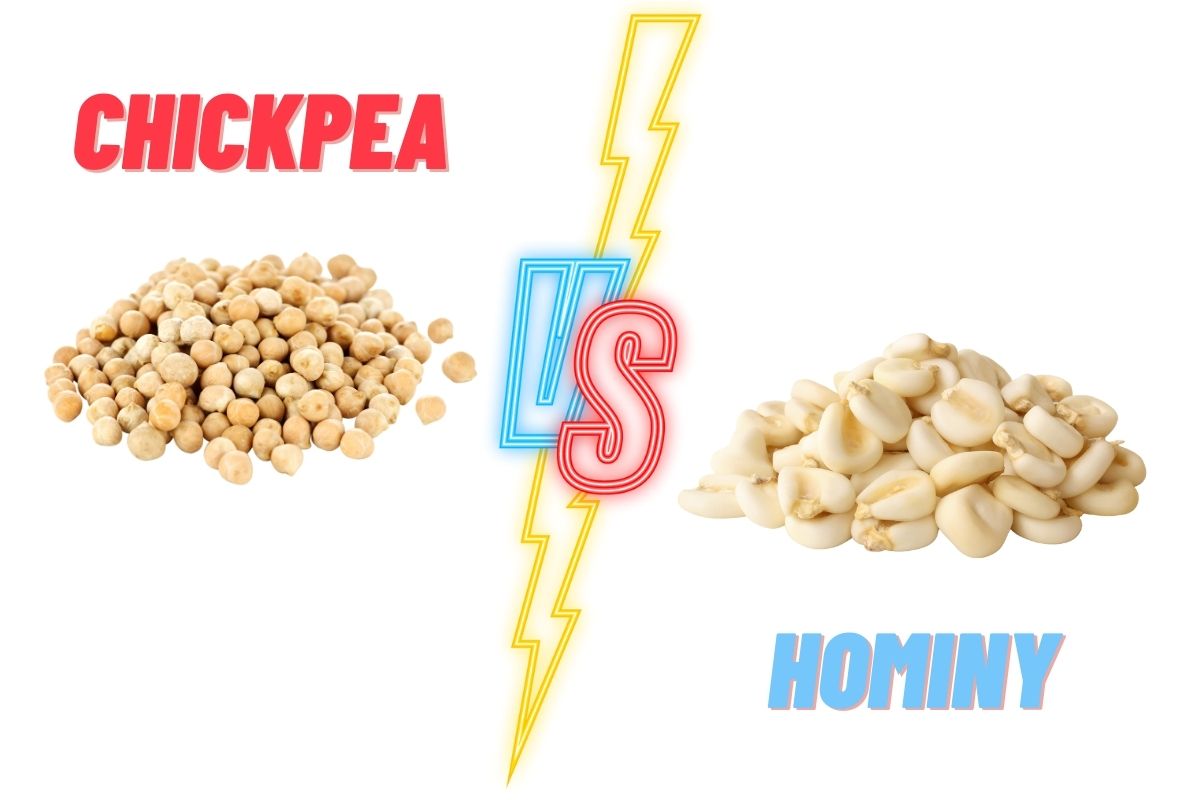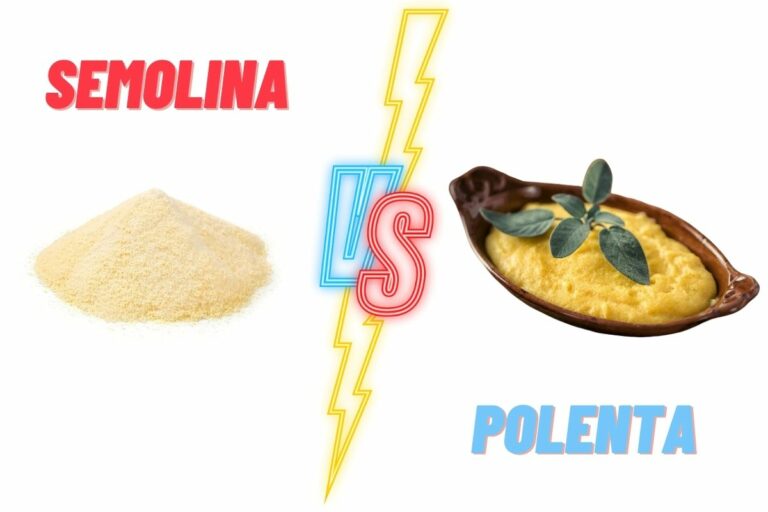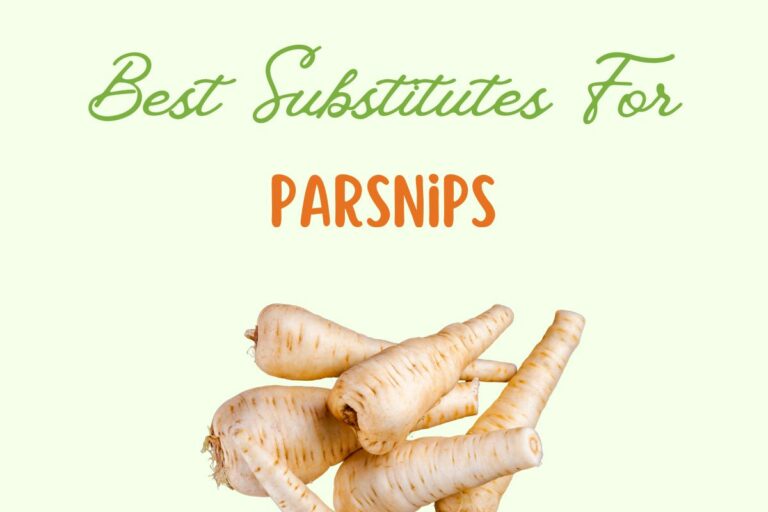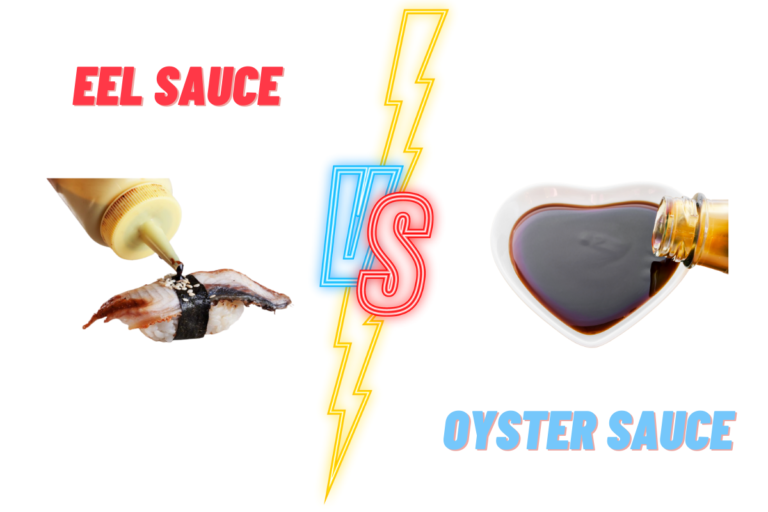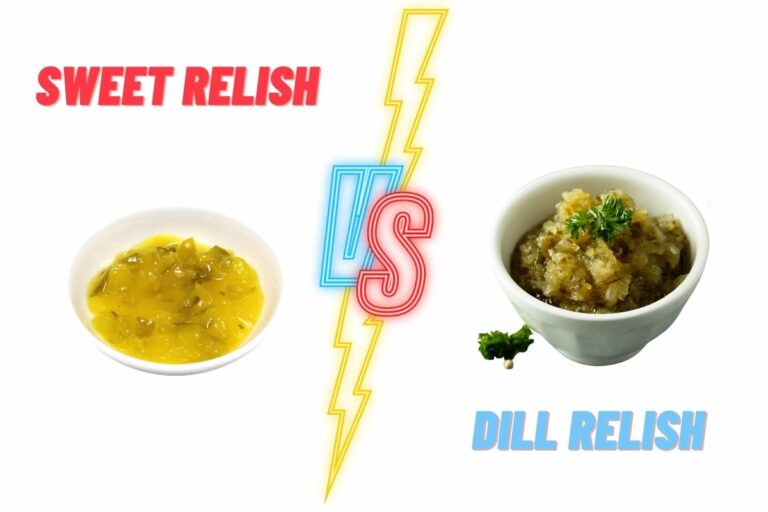Chickpea vs Hominy- The Battle of the Beans
For the last few years, Chickpeas and Hominy became healthier alternatives compared to other bite snacks such as chips. Everyone wants to incorporate this plant-based protein into their diets. But are these two things the same? What’s the difference between chickpea and hominy?
The chickpea is a yearly Asian plant (Cicer arietinum) in the pea family that is grown for edible seeds in its short, enlarged pods. On the other hand, Hominy is prepared maize kernels that have been subjected to a unique chemical procedure to make the grain more accessible for use in cooking and eating.
I bet you want to learn more about their differences, how to use them, their recipes, their ingredients, and their substitutions. Fear not, we’ve got it all covered.
What Are Chickpeas?
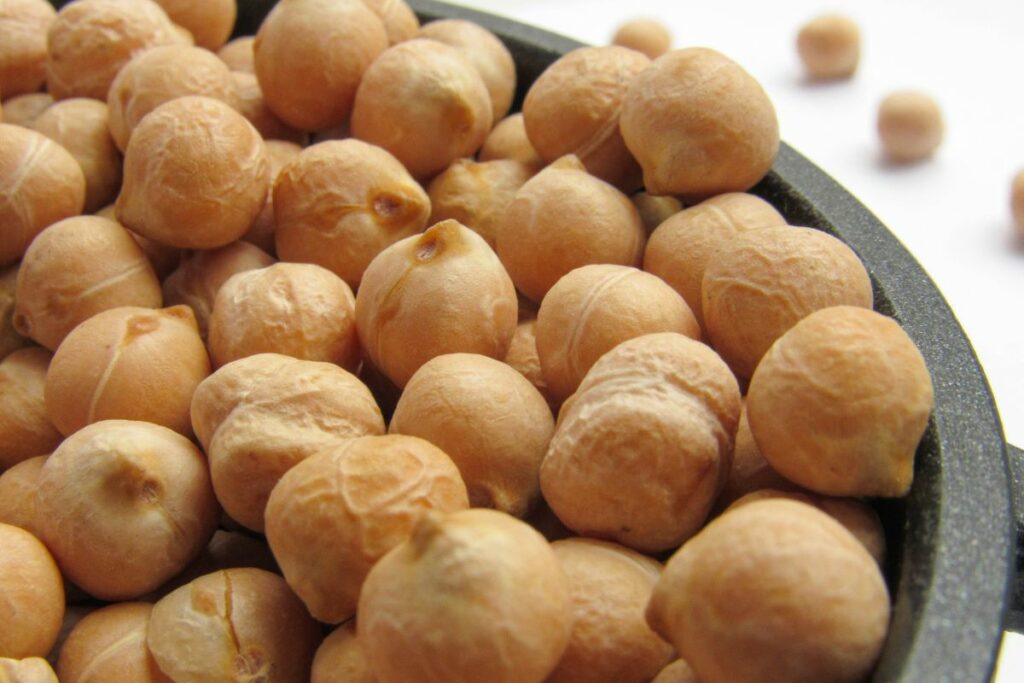
They come in red, green, black, and brown, among other colors. Brown chickpeas are used as the main ingredient in both hummus and falafel. Most of the time, they are used in curries and a spicy dish called “chana masala” in India.
Chickpeas can be found in two varieties:
Canned
You may open the can and eat the chickpeas right away since they have already been cooked. They should be rinsed before use to remove any extra salt.
Dried
Meanwhile, dried chickpeas must be cooked before they can be eaten. If you put them in an airtight container, you can keep them for a year. It will take longer to cook them if they are kept in storage for a longer period of time.
What Is Hominy?
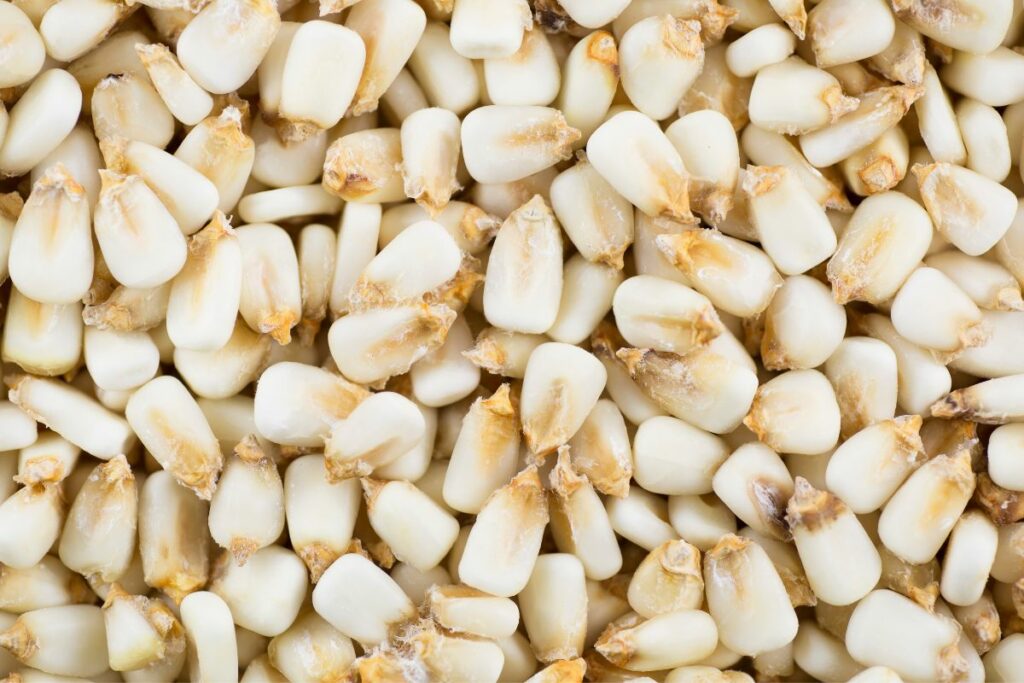
Hominy is a kind of maize that is not eaten raw. Nixtamalizing dried field corn (also known as maize) into hominy is a cooking technique that has been used by people in what is now Mesoamerica for thousands of years.
Corn is processed by removing the hulls and softening the interior kernels by soaking them in lye or lime solutions and then rinsing them many times.
As winter approached, it was crucial for chefs to find as many methods as possible to preserve the corn crop, and this procedure enhanced the maize’s nutritional value and prevented the grain from sprouting during extended storage.
Hominy’s rich taste and fragrance are more reminiscent of stone ground grits or freshly prepared tortillas than fresh corn.
Differences Between Chickpea And Hominy
Although sometimes they are considered almost the same or similar in looks or taste. These two beans have their own unique tastes and qualities, which make them very different in their own ways.
Taste
Because they are legumes, chickpeas have a flavor similar to that of beans. Because of their starchiness, they are often compared to cannellini and pinto beans. They have a nutty, earthy flavor that’s often praised.
Hominy, being derived from corn, shares that grain’s mild, earthy-sweet flavor; nevertheless, the nixtamalization process amplifies hominy’s natural nuttiness and gives it a characteristic fluffy-yet-chewy texture.
In most cases, yellow hominy will have a more pleasant flavor than its white counterpart.
Nutrition
Chickpeas pack a nutritional punch. One cup of cooked chickpeas has 269 calories, 14.5 grams of protein, 4.25 grams of fat, 44.9 grams of carbohydrates, and a whopping 12.5 grams of dietary fiber, according to the USDA’s nutrient database.
In fact, you’ve already exceeded the daily recommended consumption of fiber by nearly 44 percent.
Vitamins, minerals, and antioxidants are abundant in chickpeas as well. People who eat chickpeas and/or hummus on a daily basis have increased intakes of fiber, vitamins A, E, and C, folate, magnesium, potassium, and iron, according to research published in the journal Nutrients.
In most cases, hominy is beneficial to your health. Per cup, it has a relatively low 119 calories and 1.5 grams of fat, but a high 24 grams of carbohydrate. Fiber and iron may be found in abundance in it.
Storage
Chickpeas are simple to store. After the chickpeas have cooled fully, keep them in an airtight container in the fridge. There is a three-day window in which they will function properly. Also, they may be frozen and kept for up to six months.
While freshly cooked hominy is best eaten as soon as possible, it may be kept in the cooking liquid for up to 5 days in the fridge.
After being boiled and drained, hominy may be frozen for up to four months in a freezer-safe container or bag. Make sure to write what’s inside and when the
Hominy was cooked in the containers.
Health Benefits
The protein in chickpeas is important for maintaining strong bones, healthy muscles, and supple skin.
Chickpeas and grains, for example, maybe a great source of protein for vegetarians and those trying to reduce their meat intake.
There is over one-third of an adult’s daily protein requirement in only one cup of chickpeas. It also prevents different health issues such as diabetes, high blood pressure, and cancer.
Hominy is a great alternative for people looking to eliminate gluten from their diet since it is a gluten-free grain.
Gluten is not present in hominy in its canned form. Hominy, as we now know, is a wonderful source of energy since it has a high concentration of carbohydrates. Those who have gluten sensitivities may eat it without worry.
Vitamin B is abundant in hominy. The question is, “Why is that?” So, putting the vitamin into an alkaline solution increases its bioavailability.
After nixtamalization, the vitamin is produced in a form that is more easily bound by the body. B vitamins aid in energy synthesis and red blood cell development, and they also help avoid nutritional deficiency illnesses.
| Difference | Chickpea | Hominy |
| Taste | Nutty, Earthy | Mid, Earthy sweet flavor |
| Nutrition | Huge amount of fiber, Vitamin A, C, E, One cup contains 269 calories. | Per cup contains 119 calories, an abundance of fiber, and iron. |
| Benefits | Prevent diseases like diabetes, high blood pressure, and cancer | Gluten-free diet, helps with red blood cell development and prevents nutritional deficiency illness. |
| Storage | can be kept frozen for 6 months | Generally better to eat fresh but can be stored for four months frozen. |
How To Use Chickpeas
To those who like hummus, the chickpea’s many benefits are well known. Chickpeas (also called garbanzo beans) produce a silky spread when blended with tahini and olive oil, which is then used as a dip for vegetables or crackers and as a sandwich spread.
Here are some great ways to use chickpeas in different dishes:
Roasted Chickpeas
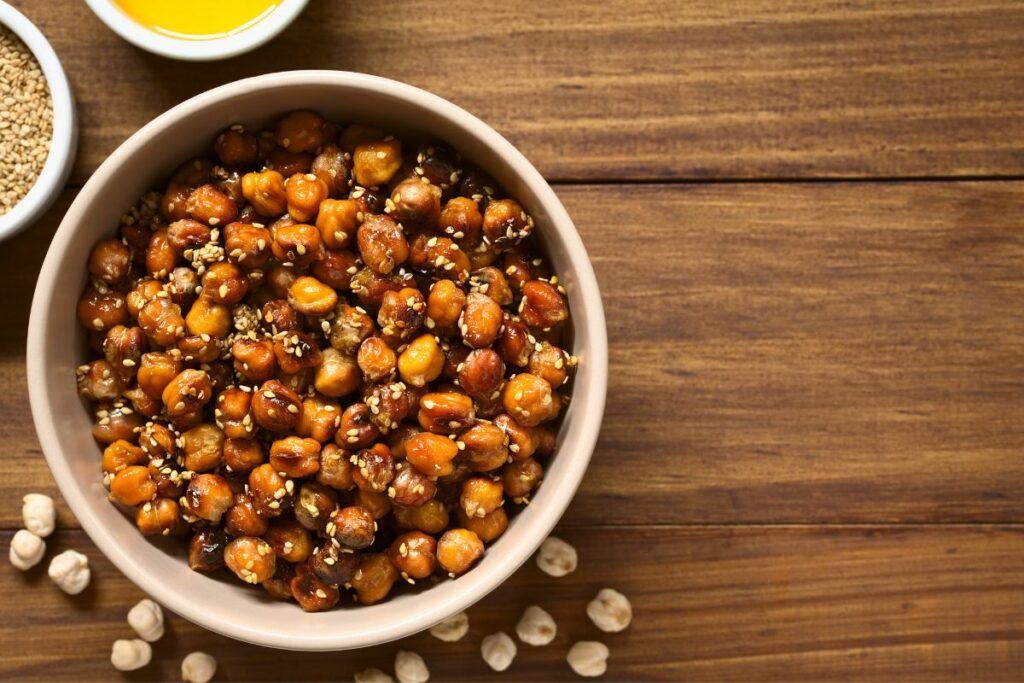
Keep some roasted chickpeas on hand to stave off the afternoon cravings; they’re really addicting.
But don’t limit yourself to nibbling! In place of toasted nuts, try sprinkling some roasted chickpeas over your salad. In addition to being a good source of protein, they provide crunch and taste to your diet.
In terms of flavor, the sky is the limit when it comes to roasted chickpeas. Some of my favorite seasonings include curry powder, dried rosemary, smoked paprika, and Italian spice. Sprinkle some salt and pepper on it, too.
Soups And Stews
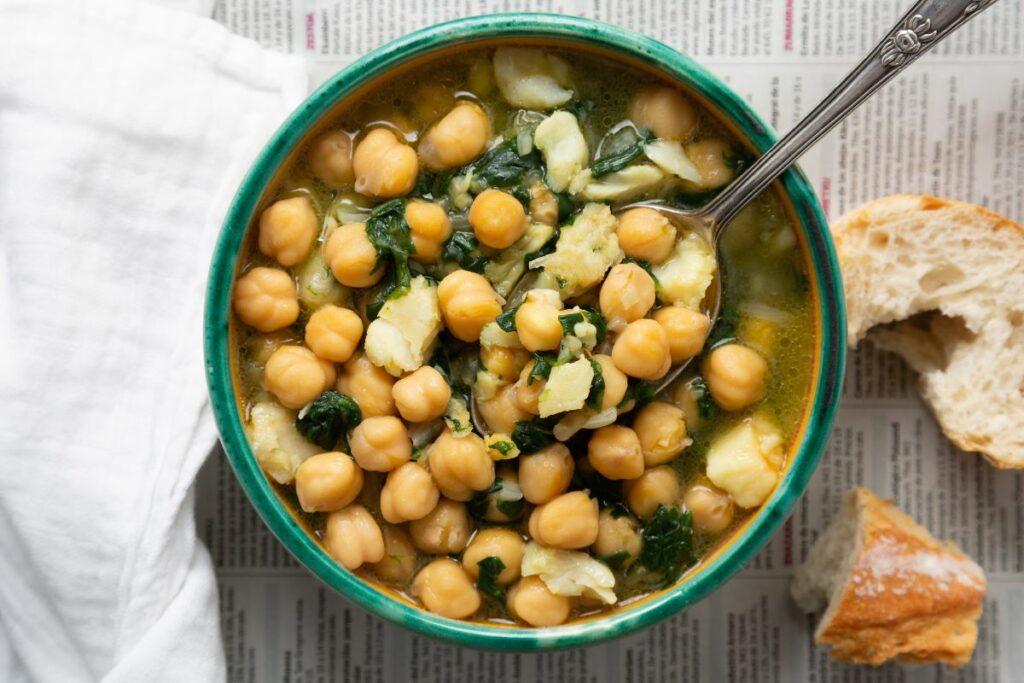
Soups, stews, and curries may all benefit from using chickpeas as a meat substitute. They do great in slow cookers, pressure cookers, and on the stovetop at a moderate simmer.
Chickpea curry, like Ree’s, can be made using ingredients you almost always have on hand.
White beans are an excellent alternative to other beans in meals like pasta sauce and curry (cannellini, navy, or great northern beans). Pinto, black, and red kidney beans are all great options for making recipes with a southwestern or Mexican flavor.
Sandwich
You can construct a fantastic vegetarian sandwich using crushed chickpeas as the basis, and no one will miss the meat.
Make a chickpea spread by mashing some chickpeas with the back of a fork in a bowl, then add some olive oil, seasonings, and the herbs and spices of your choice. You may also make a lovely, creamy concoction by mashing the chickpeas with some avocado.
Stack the mashed chickpeas with tomatoes, cucumber, sprouts, and spinach on top of some quality crusty bread.
How To Use Hominy In Recipes
Whole hominy that has been seasoned in a simple vegetable side dish. Most chefs, however, include hominy in other meals, including salsas, soups, and stews, particularly posole, a famous aromatic, savory stew that may outshine a pot of chili. Some of our most beloved hominy dishes are listed here.
Peanut Pumpkin Stew

Incredible taste and texture are achieved by combining roasted pumpkin, peanuts, and hominy with various spices. Alternatively, you might use butternut squash for the acorn squash in this meal.
Santa Fe Soup
This flavorful and simple soup is like having a taco for dinner, only in a bowl. Toss cooked ground beef with taco seasoning and a can each of hominy, beans, corn, and diced tomatoes.
Soak up the luscious sauce with some cornbread or some crispy corn chips.
Green- Chile Posole
After the chicken thighs have been slow-cooked until they are coming apart, the hominy is added. Mix in the cheese and top with the condiments of your choice. We’re picky eaters who love avocados, radishes, and limes.
3 Chickpea Alternatives
There are countless chickpea alternatives that you will love. Here we list the best 3 best options.
Black Beans
Whether you call them black beans, turtle beans, or anything else, you’ll see them often in American, Mexican, and Caribbean cuisines. And they go well in dishes like cowboy caviar, white chicken chili, creamy taco soup, and coconut rice with black beans.
They taste sweet and somewhat earthy. And because of their silky consistency, they may be used in place of chickpeas in many dishes.
Green Peas
This replacement can come as a pleasant surprise. In contrast, green peas may be used in lieu of chickpeas in a number of recipes. They taste different from chickpeas and have their own unique identity. Those who don’t like chickpeas will appreciate these.
Pasta salads like this one with dill pickles and green peas are rather common. They also go well in rice dishes like Hawaiian haystacks and stews like creamy chicken noodle soup and Crock Pot hamburger stew.
Mung Beans
This replacement is another common vegan food. Mung beans are packed with a lot of protein, fiber, and B vitamins.
They can be used instead of chickpeas in soups and stews and go well with rice dishes and Asian recipes.
3 Substitutes for Hominy
Hominy is hard to replace because it has a unique taste and texture that can only come from processed food. Here are some close replacements that might help you.
Corn
Corn also needs to be on this list. It is, after all, the vegetable from which hominy was first made. You can cook many savory dishes with either fresh or frozen corn. Just keep in mind that even though they come from the same family, each type of corn has a different taste and feel.
Buckwheat Grits
You may use buckwheat grits in place of hominy with no loss in taste or texture. It will have the same satisfying grainy taste and weight as the original.
If you’re looking for an alternative to hominy, this is a fantastic choice. It’s also great in stews, soups, and chili. Barley grits are an excellent substitute for buckwheat grits for preparing savory dishes.
Samp
Samp is quite similar to hominy in terms of how it is grown, how it feels, and what it may be used for. Similar to broken rice, this is composed of dried corn kernels that have been sliced into bits, albeit the resulting fragments are somewhat bigger.
It goes well with a variety of different types of meat, including chicken, beef, and lamb, therefore it’s often used in meals that include those ingredients.
Also, if you’re searching for a quick and easy substitute for hominy in stuffing recipes, samp is a fantastic choice.
By removing the tough outer shell before cooking, samp kernels may be cooked to a buttery, delicate texture. In addition to its widespread use in African cuisine, samp appears in a few regionally specific American dishes.
FAQs
Do Chickpeas Make Hummus?
Hummus is made mostly from chickpeas and other legumes. Traditionally, hummus is created by combining chickpeas, olive oil, tahini, and lemon juice to create a paste (sesame paste.) Biena Snacks is devoted to manufacturing tasty, crispy chickpeas that can be eaten right out of the bag, rather than preparing hummus.
Do You Need To Cook Canned Hominy?
Canned hominy is convenient since it is fully cooked and ready to eat in a variety of ways, such as by itself as a side dish (try it with some butter, salt, and pepper), in a fast sauté with veggies for a quick and simple main dish, or in a variety of soups and stews.
Should You Wash Canned Hominy?
You can get the odor and taste out of the container by washing it. Once the pozole has been drained in a strainer, rinse the kernels under running water until they are bright and clean and no longer have that slimy film, then pat dry with a clean towel.
Wrapping Up
Now that all of these things are said and done, it is easy to see the difference between chickpeas and hominy.
Grown annually for the delicious seeds in its short, expanded pods, the chickpea (Cicer arietinum) is an Asian plant in the pea family. Hominy is the refined maize kernel, which has undergone a special chemical process to make it more digestible and suitable for cooking and eating.

